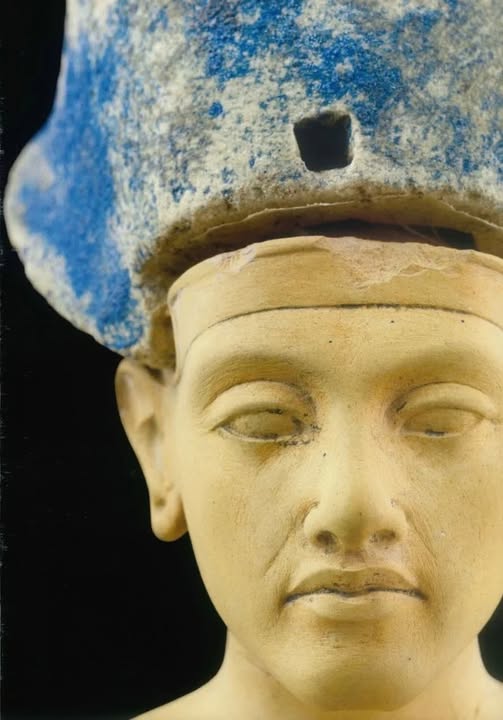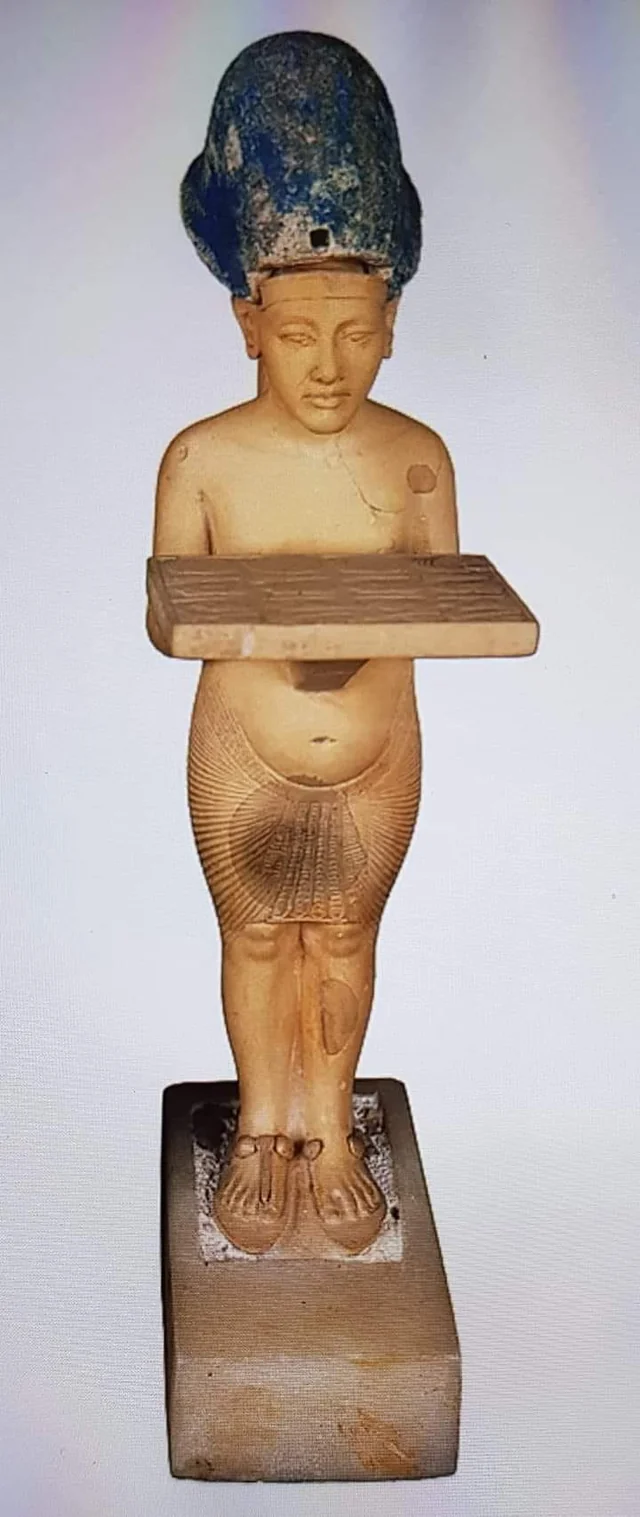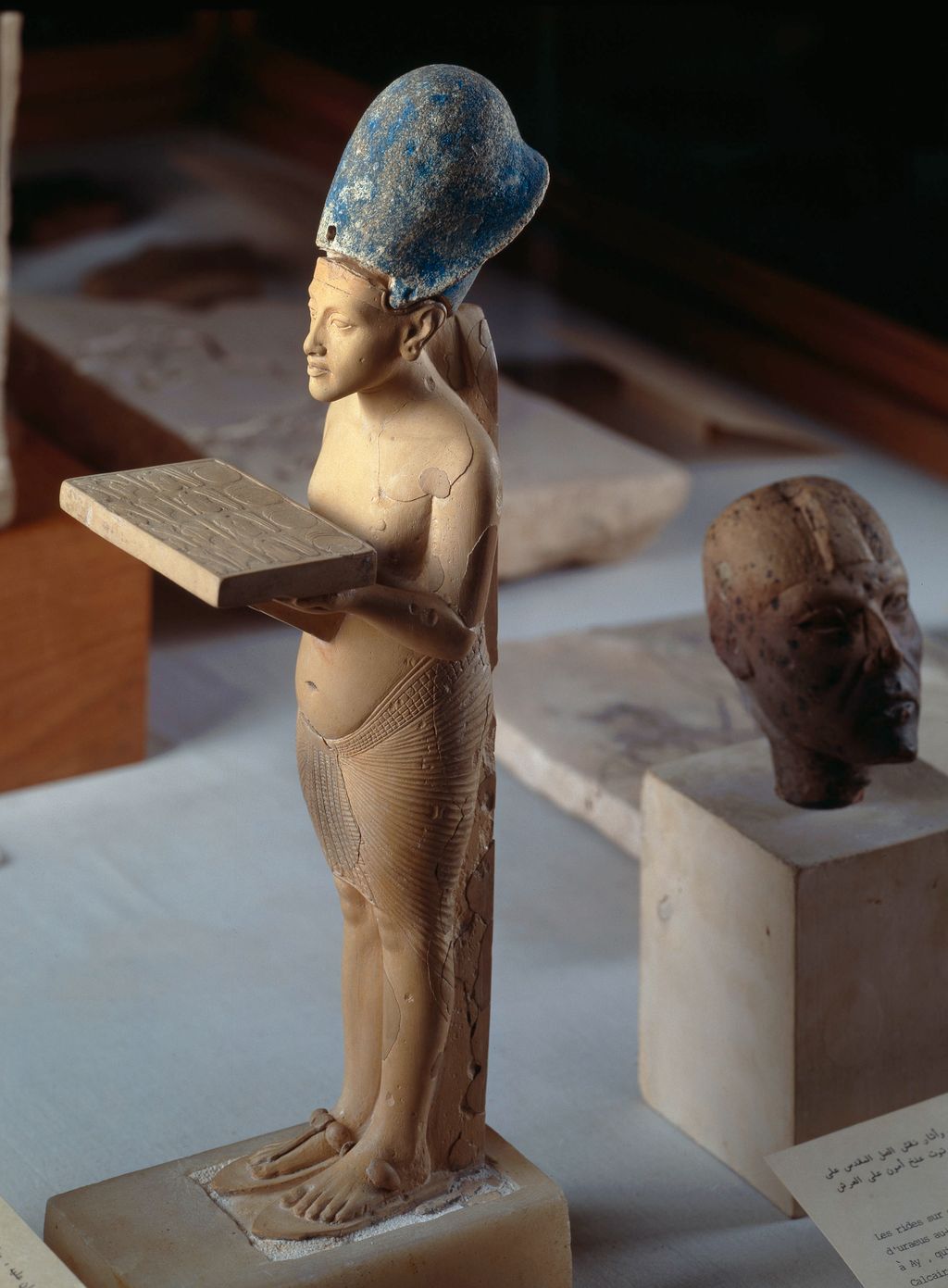Detail of a Painted Limestone Statuette of King Akhenaten

Detail of a Painted Limestone Statuette of King Akhenaten
This piece portrays King Akhenaten, who reigned circa 1353–1336 BCE during Egypt’s 18th Dynasty. The delicate remains of paint highlight the refined craftsmanship characteristic of the Amarna Period.

King Akhenaten, also known as Amenhotep IV, was a pharaoh of Egypt’s 18th Dynasty who reigned from around 1353 to 1336 BCE. He is most famous for initiating a radical religious revolution by promoting the worship of Aten, the sun disk, over Egypt’s traditional pantheon of gods, effectively creating one of the earliest forms of monotheism in history.

Akhenaten moved the capital from Thebes to a newly built city called Akhetaten (modern-day Amarna), where he and his queen, Nefertiti, established a unique artistic style characterized by naturalistic and elongated depictions of the royal family.

His reign was marked by dramatic cultural and religious changes, but after his death, Egypt largely reverted to traditional practices, and his memory was intentionally erased from many records. Akhenaten’s legacy endures as a controversial and intriguing figure whose bold reforms left a lasting mark on Egyptian history.












